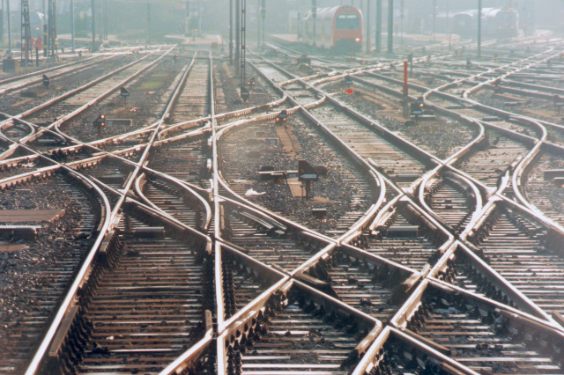Under the Railways Act (RailA), railway undertakings are required to compensate infrastructure managers for using the rail network. The train path price they owe primarily covers the costs that a train causes directly by travelling at a particular time between two places. Passenger traffic also pays, via the train path price, a contribution to the overheads of rail infrastructure. The traffic thus finances approx. one third of the costs of rail infrastructure (operation, maintenance and investment in preservation of the substance of facilities). The remaining costs are covered by the Confederation via the Rail Infrastructure Fund.
How the train path price is calculated is laid down in the Rail Network Access Ordinance (RNAO) and the FOT Ordinance on Rail Network Access. It must at least cover the costs that a train directly causes by travelling on the train path ordered (marginal costs). Passenger traffic additionally contributes to the overheads of rail infrastructure, via a contribution margin, which is calculated in percentage of traffic revenue.
The train path price varies from train to train and route to route, and is made up of the price for basic services and compensation for additional services. It also takes into account the wear and tear caused by trains on the track. This provides an incentive to deploy the most track-friendly rolling stock.
The basic services (Art. 21 RNAO) correspond approximately to the “minimum access package”, as defined within the EU, and comprise:
- Train path use, including train operating services, e.g. management of operations, including the telecommunications and IT services required for these operations; with train departure and arrival details; information about incidents/disruptions on the infrastructure side etc.
- Power supply ex catenary
- Passenger traffic: Use of a track with a platform edge and access to public facilities
- Freight traffic: Track use by “unchanged train” between agreed departure and terminus points.
The additional services (Art. 22 RNAO), cover, e.g. shunting and parking trains, using loading equipment etc.
Determining the train path price
The Federal Office of Transport determines the train path price for basic services under Art. 21 RNAO, based on details from the infrastructure managers. As licensing authority, it also sets the amount of the contribution margin.
The price for additional services under Art. 22 RNAO is set by the infrastructure managers themselves in a non-discriminatory way, and published.




